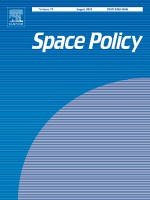Reboot, Continuity, or Adaptation? Making Sense of Japan's FOIP Vision Update in the Context of China and Taiwan

Since its inception in late 2016, Japan's Free and Open Indo-Pacific (FOIP) vision has continued to adapt to a shifting global order associated with an intensification of the US-China strategic competition, technological innovation, competition for influence in the so-called Global South, and global challenges such as climate change. The FOIP includes wide-ranging initiatives. These include economic partnerships such as the Comprehensive and Progressive Agreement for Trans-Pacific Partnership (CPTPP), energy cooperation in the form of Asia Zero Emission Community, and security and defense cooperation through the annual Indo-Pacific Deployment. Japan's political will and vision to uphold a free and open, rules-based international order has obtained buy-in from like-minded partners in the region and beyond. The term "Indo-Pacific" has effectively replaced the previously common "Asia-Pacific" and it is now understood as a geographical and strategic frame of reference for the region. This is puzzling as Japan did not have a policy document stipulating the ways and the means of achieving a FOIP region until Prime Minister Kishida's speech in New Delhi in March 2023 and his announcement of the FOIP Vision update. How has Japan achieved this success in the adoption of the Indo-Pacific framing? How do we make sense of Japan's FOIP vis-à-vis its relations with China and Taiwan? By employing the pyramid principle, this paper seeks to unpack and examine the construct of Japan's FOIP in the context of Japan's national interests. The research reveals that the recent FOIP update signifies strategic continuity rather than a reboot, with tactical adjustments in place. While it shows that FOIP has not been an effective mechanism for cooperation with Japan's closest neighbors such as China, Taiwan is implicitly integrated as an essential partner in Japan's FOIP version 3.0.




